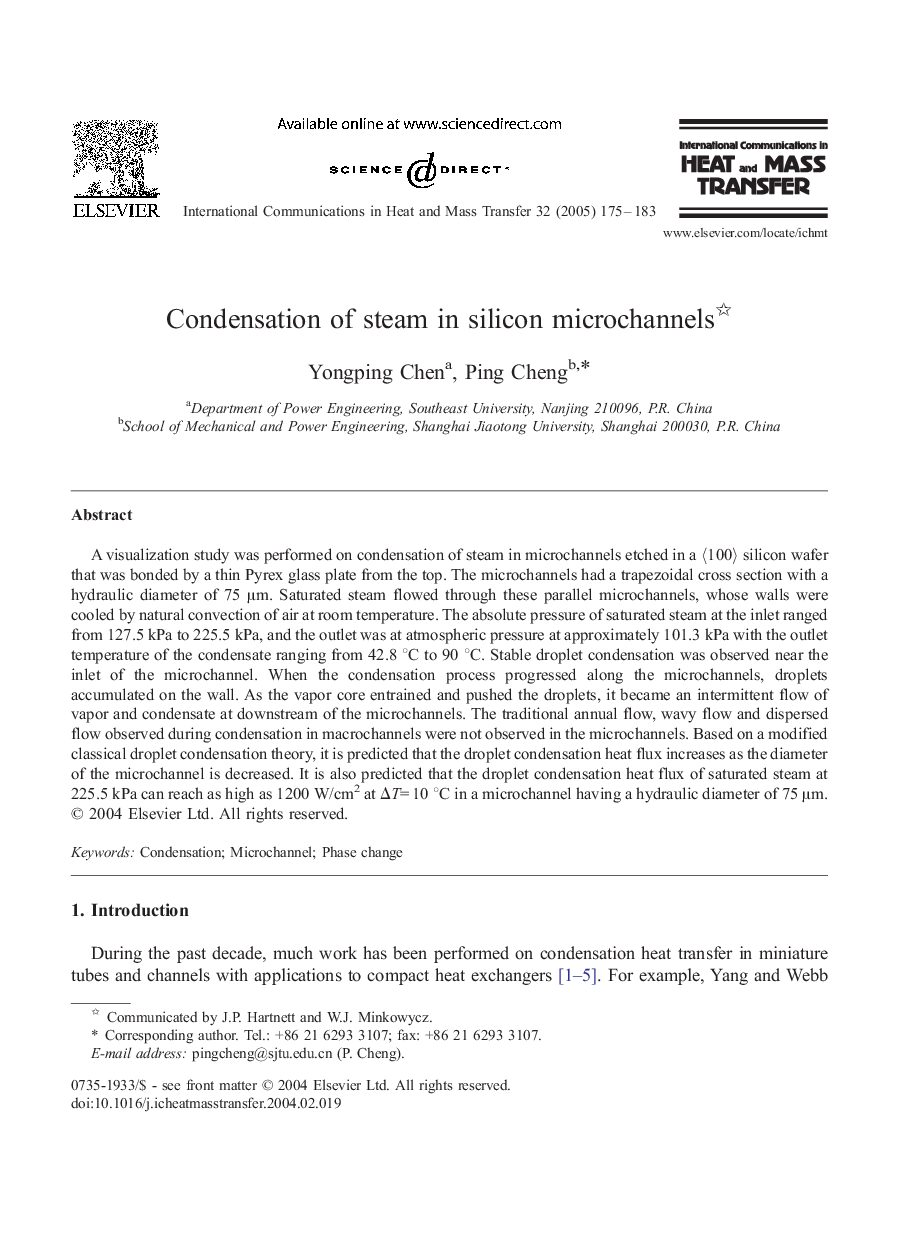| Article ID | Journal | Published Year | Pages | File Type |
|---|---|---|---|---|
| 9691056 | International Communications in Heat and Mass Transfer | 2005 | 9 Pages |
Abstract
A visualization study was performed on condensation of steam in microchannels etched in a ã100ã silicon wafer that was bonded by a thin Pyrex glass plate from the top. The microchannels had a trapezoidal cross section with a hydraulic diameter of 75 μm. Saturated steam flowed through these parallel microchannels, whose walls were cooled by natural convection of air at room temperature. The absolute pressure of saturated steam at the inlet ranged from 127.5 kPa to 225.5 kPa, and the outlet was at atmospheric pressure at approximately 101.3 kPa with the outlet temperature of the condensate ranging from 42.8 °C to 90 °C. Stable droplet condensation was observed near the inlet of the microchannel. When the condensation process progressed along the microchannels, droplets accumulated on the wall. As the vapor core entrained and pushed the droplets, it became an intermittent flow of vapor and condensate at downstream of the microchannels. The traditional annual flow, wavy flow and dispersed flow observed during condensation in macrochannels were not observed in the microchannels. Based on a modified classical droplet condensation theory, it is predicted that the droplet condensation heat flux increases as the diameter of the microchannel is decreased. It is also predicted that the droplet condensation heat flux of saturated steam at 225.5 kPa can reach as high as 1200 W/cm2 at ÎT=10 °C in a microchannel having a hydraulic diameter of 75 μm.
Keywords
Related Topics
Physical Sciences and Engineering
Chemical Engineering
Fluid Flow and Transfer Processes
Authors
Yongping Chen, Ping Cheng,
